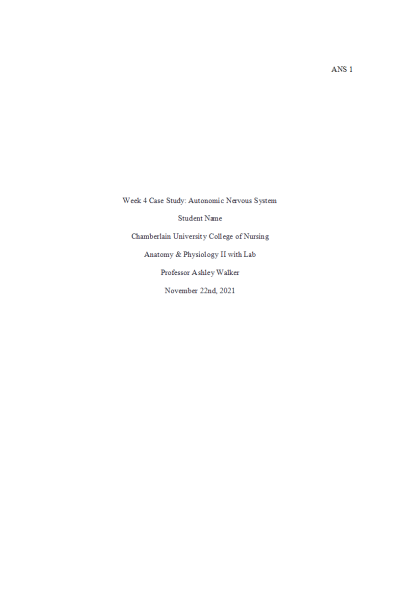BIOS 252 Week 4 Case Study; Autonomic Nervous System
-
$15.00
| Institution | BIOS 252 Anatomy and Physiology II wi/Lb |
| Contributor | Steve Sanders |
Week 4 Case Study: Autonomic Nervouse System
Four individuals presented to the ER with several signs and symptoms (see table 1). While taking their history, you ask if they've recently ingested anything. At first, they didn't claim anything but then one remembered they went mushroom hunting and addedit to a stew. You're truffle hunting skills paid off when you identified the mushroom from their photo of it as Amanita Muscaria, a mushroom containing the neurotoxin muscarine.
Deliverables
Review the article above, answer the following questions and save your responses in a Microsoft Word document. Provide a scholarly resource in APA format to support your answers.
- Looking at the signs and symptoms, you notice that one of the two branches of the autonomic nervous system (ANS) is highly upregulated. Which one is it? Name three signs or symptoms that clued you in on it and why.
- What receptor do you think muscarine binds to in the ANS? What neurotransmitter usually binds to the receptor?
- At first, It seemed odd that three out of four of your patients were sweating. It makes sense now that you know what they ate. Why?
- Treatment for this issue includes the use of atropine. Atropine is anticholinergic. Define cholinergic and determine why you would use it in this case.
| Instituition / Term | |
| Term | Summer Session |
| Institution | BIOS 252 Anatomy and Physiology II wi/Lb |
| Contributor | Steve Sanders |






























